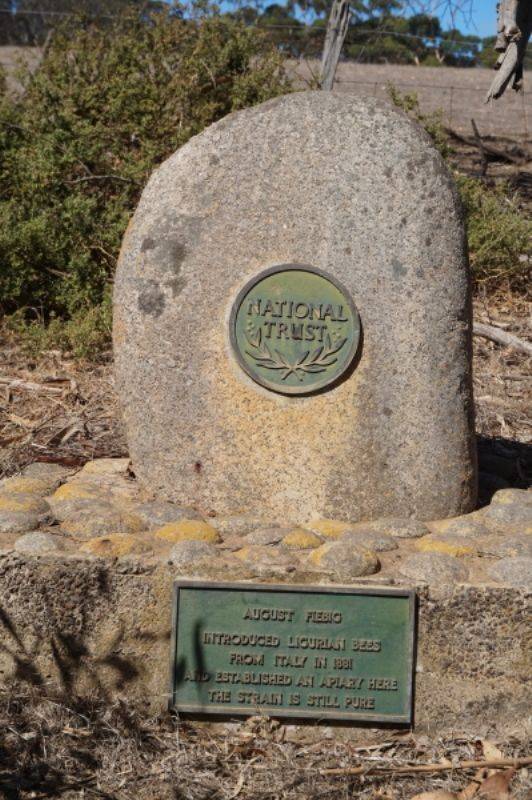
Home » Themes » Technology » Agriculture
Ligurian Bee SanctuaryPrint Page 

The National Trust plaque commemorates the creation of the bee sanctuary in 1885 and an additonal plaque commemorates August Fieber`s contribution to Liguarian bee conservation.
The Ligurian bees on Kangaroo Island are believed to be the last remaining pure stock of this bee found anywhere in the world. In the early 1880's Ligurian bees were imported by the South Australian Chamber of Manufacturers. The Ligurian bee was named for its origin in the Ligurian Alps in the days of the Roman Empire. Roman historians praised its docility and productivity. The scientific name of this species is Apis mellifera ligustica.
Due to the efforts of Mr. A.E. Bonney, secretary of the South Australian Beekeepers' Association, these bees were introduced to the Island and the bee population rapidly expanded in the mild climate and plentiful pollen and nectar sources.
Kangaroo Island was declared a bee sanctuary in 1885. No other bees have since been imported to the Island.
The site of the original apiary is well known to Islanders but is not supported by firm historical evidence as to the date. However August Fiebig undoubtedly played an important role in conserving the genetic heritage of the pure Ligurian bee.
Location
| Address: | Blue Gum Road, Penneshaw, 5222 |
|---|---|
| State: | SA |
| Area: | Foreign |
| GPS Coordinates: | Lat: -35.755333 Long: 137.929526 Note: GPS Coordinates are approximate. |
Details
| Monument Type: | Monument |
|---|---|
| Monument Theme: | Technology |
| Sub-Theme: | Agriculture |
| Approx. Event Start Date: | 1885 |
Dedication
National Trust
August Fiebig introduced Ligurian Bees from Italy in 1881 and established an apiary here
The strain is still pure



